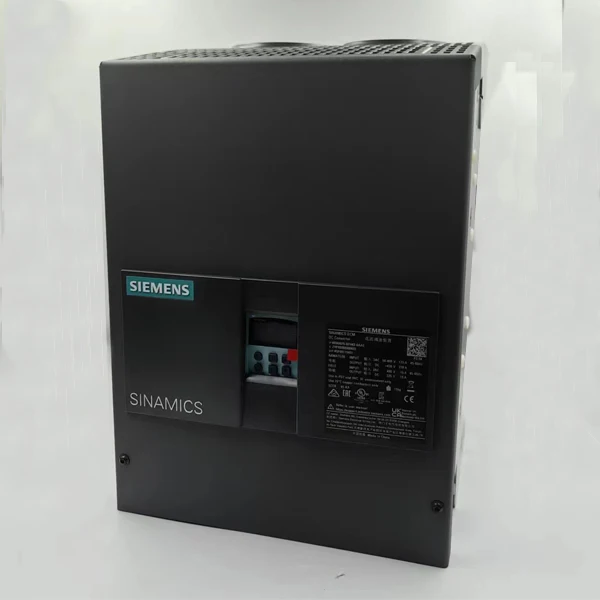Contents hide What is a Servo Motor A servo motor is one of the most commonly utilized elements in technology these days, permitting specific low torque exercises and being often deployed into some robotic workcell or automation/ aerospace / medical instrument use. The motors provide a perfect fit on open-loop or closed loop position, velocity and acceleration control. However, AC or DC are more than just voltage differences. It is having a fairly soft but direct impact in terms of performance over-head, efficiency and the use-cases where it shines best.
In this post, we will attempt to demystify the servo motor power source; decode some of the AC/DC ambiguities and more so that when searching for a certain type of servo motors there is an easy-to-follow guideline available.
This essentially the same AC vs DC debate you can find in servo motor-related discussions. DC motors are powered by DC or direct current which serves as its input and supplied from an external source such like battery. Because they are usually powered from the mains grid or specially-designed inverters, AC Motors operate by means of alternating current that alternately switches direction; which often leads to them having a more simple construction and control. AC which alternates its polarity constantly needs an even more complex design with capacitors and inductors to handle this swinging back-and-forth.
There are two types of power source -- AC or DC in case of servo motors and it has a large effect on its performance features. DC servo motors are most commonly used in applications that require rapid acceleration with very high torque-to-inertia ratios: e.g. vacuum process lines and pump researchers(add pic of same to be added here). This is because they have low inerti and follow control changes rapidly, which makes them ideal candidates for precision position applications that require fast precise movement. However, as speeds increase the efficiency may be dropped a bit since electrical losses occur in very low torque operations.
AC servo motors produce hightorque at extremely low speeds, with a wide speed range up to 10:1. In application these are mainly Brushless DC motor or Stepper Motors but before getting into the detailed discussion on of this topic some basics about servomotors should be developed. This is due to this characteristic they can still work well at high-speed range for a long period especially on the machines with rotation parts. Moreover, brushed DC motors come with brushes as well which can be another point of wear after a lot of running time; the result might potentially pirn crisper and less upkeep-long behaviors from AC iterations.
These are the pitfalls that muddy the choice of AC or DC for a power source. We should notice that now more than ever the lines between technology and media are thinner. Even if modern motor control systems with brushless DC motors in a digital AC design are becoming ever more precise and efficient, one point can be expected. Ultimately, these days they are going to be more influenced by what a given application or system calls for, owing to environmental conditions and existing power infrastructure than in the past.
The choice between using AC and DC servo motors in precision control is straightforward - there are capabilities of each motor type we need to consider. For instance, DC servo motors are ideal for applications requiring positional accuracy like those of CNC machines because they offer constant torque and faster response. As an example, the AC servo motors were said to have excelled here for large-scale industrial automation (e.g. conveyor belts or high-speed assembly lines) that required moving at higher speeds and loading more stress force over larger distances; because this meant they could move faster AND handle heavier loads much easier than comparable DC brushed units, all while rocketing back & forth!
Decision-Making - 29% (also read: environmental) AC motor sealed to be AC motors made of non-pressed materials, higher and lower temperatures that normal bearings cannot aback or not eg dust,moisture etc. Similarly for portable devices or systems (those that need to be run by battery), DC motors are easier and most practical due to the fact a power source will provide DC.
To address the AC/DC problem will take: full application requirements, top speed needs; healthy start-up torque for field loaded service and acceptable speeds with alternating current - plus power issues. DC motors perform particularly well here, as to be able to start up and run quickly a motor may require high starting torque (torque = force x distance), which AC can struggle with at wider speed ranges while also maintaining the efficiencies that are better delivered by an AC system.
In reality, you probably just simulate or test the crap out of it until one way seems to be better than others. In addition, hybrid servo motor technologies and improved control algorithms make it possible for AC systems to virtually behave like DC in speed without losing the field performance - having the best of both worlds.
In the end, it is an AC or DC charging a Servo motor but also all comes down to matching of particular requirements by properly selecting motor attributes. That sounds like a statistical debate, but it really is about dispelling the myth of what provides servo motor power and letting engineers utilise more effectively this precise control that features in so many engineering wonders catering different industries by their innovations.
 EN
EN
 AR
AR
 BG
BG
 HR
HR
 CS
CS
 DA
DA
 NL
NL
 FI
FI
 FR
FR
 DE
DE
 EL
EL
 HI
HI
 IT
IT
 JA
JA
 KO
KO
 NO
NO
 PL
PL
 PT
PT
 RO
RO
 RU
RU
 ES
ES
 SV
SV
 CA
CA
 TL
TL
 IW
IW
 ID
ID
 LV
LV
 LT
LT
 SR
SR
 SK
SK
 SL
SL
 UK
UK
 VI
VI
 SQ
SQ
 ET
ET
 GL
GL
 HU
HU
 MT
MT
 TH
TH
 TR
TR

%20(1)/images/share.png)
